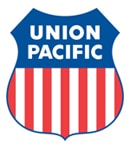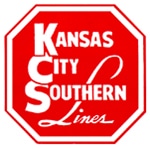BNSF reported a 9 percent improvement in profit for the third quarter 2011 versus the third quarter 2010.
The third-quarter operating ratio of 71.7 percent was slightly higher than the 70.8 percent for third-quarter 2010. Operating ratio is a railroad’s operating expenses expressed as a percentage of operating revenue, and is considered by economists to be the basic measure of carrier profitability. The lower the operating ratio, the more efficient the railroad.
BNSF, which is privately held by Berkshire Hathway, operates 28,000 route miles in 28 states and two Canadian provinces.
Canadian National reported a 19 percent increase in profit for the third quarter 2011 versus the third quarter 2010.
CN said a 4 percent increase in carloadings and a 9 percent increase in revenue, coupled with “rigorous cost control” drove its higher third quarter earnings.
CN’s third quarter 2011 operating ratio of 59.3 percent improved from the 60.7 percent operating ratio during the third quarter 2010. Operating ratio is a railroad’s operating expenses expressed as a percentage of operating revenue, and is considered by economists to be the basic measure of carrier profitability. The lower the operating ratio, the more efficient the railroad.
CN is primarily a Canadian railroad. Its U.S. holdings include what were formerly Detroit, Toledo & Ironton; Elgin, Joliet & Eastern; Grand Trunk Western; Illinois Central; and Wisconsin Central.
Canadian Pacific’s third quarter 2011 profit fell by 5 percent versus third quarter 2010.
CP’s third quarter 2011 operating ratio deteriorated to 75.8 percent, more than two percentage points higher than its 73.7 percent operating ratio for the third quarter 2010. Operating ratio is a railroad’s operating expenses expressed as a percentage of operating revenue, and is considered by economists to be the basic measure of carrier profitability. The lower the operating ratio, the more efficient the railroad.
Canadian Pacific is primarily a Canadian railroad. Its U.S. holdings include Class I Soo Line and regional railroad Delaware & Hudson.

The railroad said higher fuel surcharges improved its bottom line, offsetting higher costs. CSX said also that its earnings were helped by increased coal exports to China that offset a weakness in domestic coal shipments. Coal accounts for some 33 percent of CSX revenue.
CSX’s third quarter 2011 operating ratio deteriorated to 70.4 percent versus 69.1 percent for the third quarter 2010. Operating ratio is a railroad’s operating expenses expressed as a percentage of operating revenue, and is considered by economists to be the basic measure of carrier profitability. The lower the operating ratio, the more efficient the railroad.
CSX operates some 21,000 route miles in 23 states and the District of Columbia.
Kansas City Southern reported a 99 percent improvement in profits for the third quarter 2011 versus third quarter 2010, driven by higher freight rates and a record level of carloadings, boosted through increased production of automobiles in Mexico destined for U.S. markets.
“These achievements are all the more impressive given the operating challenges caused by prolonged flooding in the Midwest, particularly along the Missouri River,” said CEO David Starling. “The flooding resulted in the closure of a primary rail line into Kansas City from mid-June through Labor Day, which significantly disrupted grain and coal traffic.”
KCS’s operating ratio of 66.6 for the third quarter 2011 was a sharp improvement from the 73.5 percent in third quarter 2010. Operating ratio is a railroad’s operating expenses expressed as a percentage of operating revenue, and is considered by economists to be the basic measure of carrier profitability. The lower the operating ratio, the more efficient the railroad.
KCS operates some 3,500 route miles in 10 states in the Central and South-Central U.S., as well as Kansas City Southern de Mexico, a primary Mexican rail line.
Norfolk Southern reported a 24 percent increase in third quarter profit versus third quarter 2010, citing increased freight rates and a 23 percent boost in coal hauled for export.
The third quarter produced for NS “all-time records for income from operations and earnings per share, while also establishing third-quarter records for net income and operating ratio,” said NS CEO Wick Moorman.
The NS third quarter 2011 operating ratio of 67.5 was a third-quarter record low and 2.1 percentage points below its third-quarter 2010 operating ratio of 69.6 percent. Operating ratio is a railroad’s operating expenses expressed as a percentage of operating revenue, and is considered by economists to be the basic measure of carrier profitability. The lower the operating ratio, the more efficient the railroad.
NS operates some 20,000 route miles in 22 states and the District of Columbia.

UP’s operating ratio of 69.1 percent for the third quarter 2011 was slightly higher than the record 68.2 percent operating ratio it posted in the third quarter 2010. Operating ratio is a railroad’s operating expenses expressed as a percentage of operating revenue, and is considered by economists to be the basic measure of carrier profitability. The lower the operating ratio, the more efficient the railroad.
Union Pacific operates some 32,000 route miles in 23 states in the western two-thirds of the U.S.
As BNSF is now privately held, it does not report its earnings.
Related News
- Razor blade found on brake wheel
- Coming Soon: SMART-TD Voluntary Income & Life Protection (VILP) Program
- Senate Passes Tax Bill Without Including Railroaders
- SMART-TD Honors the Retirement of Brother Greg Hynes: A Visionary, a Fighter, and a Legend
- SMART-TD Calls on U.S. Senate to Support the Cantwell Amendment and Protect Rail Workers
- Yardmaster Protection Act Introduced
- PHOTO GALLERY: 2025 Denver Regional Training Seminar
- Fighting for Stronger Heat Protections for Rail Workers
- Regional Training Seminar Sets (Mile-High) Record in Denver
- Registration Open for Anaheim Regional Training Seminar


